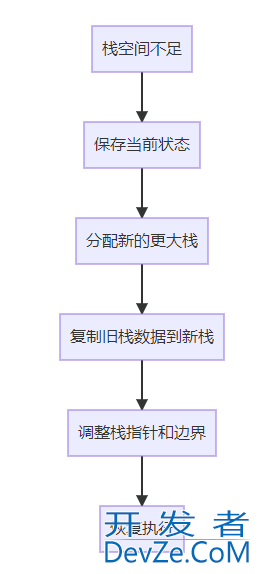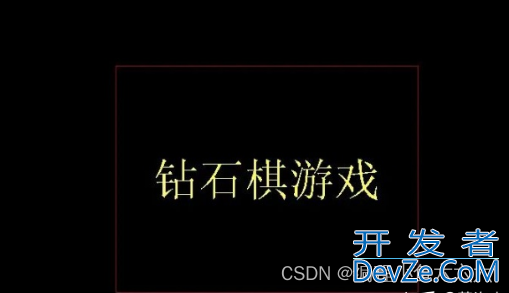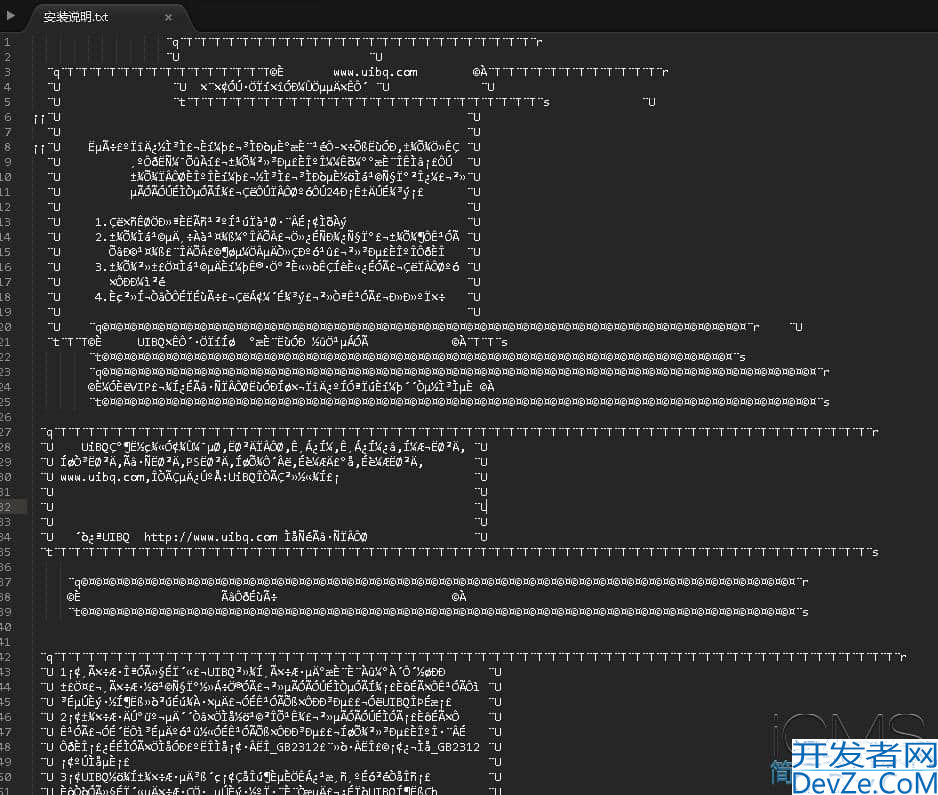SpringBoot实现插件化架构的4种方案详解
目录
- 方案一:基于Spring的条件注解实现
- 原理介绍
- 实现步骤
- 代码示例
- 优缺点分析
- 适用场景
- 方案二:基于SPI机制实现
- 原理介绍
- 实现步骤
- 代码示例
- 优缺点分析
- 适用场景
- 方案三:基于SpringBoot自动配置实现
- 原理介绍
- 实现步骤
- 代码示例
- 优缺点分析
- 适用场景
- 方案四:动态加载JAR实现
- 原理介绍
- 实现步骤
- 代码示例
- 优缺点分析
- 适用场景
- 方案对比
- 总结
在复杂业务场景下,传统的单体应用架构往往面临着功能扩展困难、代码耦合严重、迭代效率低下等问题。
插件化架构作为一种模块化设计思想的延伸,能够使系统具备更好的扩展性和灵活性,实现"热插拔"式的功能扩展。
本文将介绍SpringBoot环境下实现插件化架构的4种实现方案。
方案一:基于Spring的条件注解实现
原理介绍
这种方案利用Spring提供的条件注解(如@Conditional、@ConditionalOnProperty等)实现插件的动态加载。通过配置文件或环境变量控制哪些插件被激活,适合简单的插件化需求。
实现步骤
1. 定义插件接口
2. 实现多个插件实现类
3. 使用条件注解控制插件加载
4. 在主应用中使用插件
代码示例
1. 定义插件接口
public interface PaymentPlugin {
String getName();
boolean support(String payType);
PaymentResult pay(PaymentRequest request);
}
2. 实现插件类
@Component
@ConditionalOnProperty(prefix = "plugins.payment", name = "alipay", havingValue = "true")
public class AlipayPlugin implements PaymentPlugin {
@Override
public String getName() {
return "alipay";
}
@Override
public boolean support(String payType) {
return "alipay".equals(payType);
}
@Override
public PaymentResult pay(PaymentRequest request) {
// 支付宝支付逻辑
System.out.println("Processing Alipay payment");
return new PaymentResult(true, "Alipay payment successful");
}
}
@Component
@ConditionalOnProperty(prefix = "plugins.payment", name = "wechat", havingValue = "true")
public class WechatPayPlugin implements PaymentPlugin {
@Override
public String getName() {
return "wechat";
}
@Override
public boolean support(String payType) {
return "wechat".equals(payType);
}
@Override
public PaymentResult pay(PaymentRequest request) {
// 微信支付逻辑
System.out.println("Processing WeChat payment");
return new PaymentResult(true, "WeChat payment successful");
}
}
3. 插件管理器
@Component
public class PaymentPluginManager {
private final List<PaymentPlugin> plugins;
@Autowired
public PaymentPluginManager(List<PaymentPlugin> plugins) {
this.plugins = plugins;
}
public PaymentPlugin getPlugin(String payType) {
return plugins.stream()
.filter(plugin -> plugin.support(payType))
.findFirst()
.orElseThrow(() -> new IllegalArgumentException("Unsupported payment type: " + payType));
}
public List<String> getSupportedPayments() {
return plugins.stream()
.map(PaymentPlugin::getName)
.collect(Collectors.toList());
}
}
4. 配置文件设置
plugins:
payment:
alipay: true
wechat: true
paypal: false
5. 在服务中使用
@Service
public class PaymentService {
private final PaymentPluginManager pluginManager;
@Autowired
public PaymentService(PaymentPluginManager pluginManager) {
this.pluginManager = pluginManager;
}
public PaymentResult processPayment(String payType, PaymentRequest request) {
PaymentPlugin plugin = pluginManager.getPlugin(payType);
return plugin.pay(request);
}
public List<String> getSupportedPaymentMethods() {
return pluginManager.getSupportedPayments();
}
}
优缺点分析
优点:
- 实现简单,无需额外的框架支持
- 与Spring生态完全兼容
- 启动时即完成插件加载,性能稳定
缺点:
- 不支持运行时动态加载/卸载插件
- 所有插件代码都需要在编译时确定
- 插件之间可能存在依赖冲突
适用场景
- 功能模块相对稳定,变化不频繁的系统
- 简单的SaaS多租户系统中不同租户的功能定制
- 不同部署环境需要不同功能模块的场景
方案二:基于SPI机制实现
原理介绍
SPI(Service Provider Interface)是Java提供的一种服务发现机制,允许第三方为系统提供实现。SpringBoot也提供了类似机制的扩展,可以利用它实现一种松耦合的插件化架构。
实现步骤
1. 定义插件接口和抽象类
2. 实现SPI配置
3. 创建插件实现类
4. 实现插件加载器
代码示例
1. 定义插件接口
public interface ReportPlugin {
String getType();
boolean support(String reportType);
byte[] generateReport(ReportRequest request);
}
2. 创建SPI配置文件
在META-INF/services/目录下创建与接口全限定名同名的文件,如:
META-INF/services/com.example.plugin.ReportPlugin
文件内容为实现类的全限定名:
com.example.plugin.impl.PdfReportPlugin com.example.plugin.impl.ExcelReportPlugin com.example.plugin.impl.htmlReportPlugin
3. 实现插件类
public class PdfReportPlugin implements ReportPlugin {
@Override
public String getType() {
return "pdf";
}
@Override
public boolean support(String reportType) {
return "pdf".equals(reportType);
}
@Override
public byte[] generateReport(ReportRequest request) {
System.out.println("Generating PDF report");
// PDF生成逻辑
return "PDF Report Content".getBytes();
}
}
// 其他插件实现类类似
4. 插件加载器
@Component
public class SpiPluginLoader {
private static final Logger logger = LoggerFactory.getLogger(SpiPluginLoader.class);
private final Map<String, ReportPlugin> reportPlugins = new HashMap<>();
@PostConstruct
public void loadPlugins() {
ServiceLoader<ReportPlugin> serviceLoader = ServiceLoader.load(ReportPlugin.class);
for (ReportPlugin plugin : serviceLoader) {
logger.info("Loading report plugin: {}", plugin.getType());
reportPlugins.put(plugin.getType(), plugin);
}
logger.info("Loaded {} report plugins", reportPlugins.size());
}
public ReportPlugin getReportPlugin(String type) {
ReportPlugin plugin = reportPlug编程ins.get(type);
if (plugin == null) {
throw new IllegalArgumentException("Unsupported report type: " + type);
}
return plugin;
}
public List<String> getSupportedReportTypes() {
return new ArrayList<>(reportPlugins.keySet());
}
}
5. 在服务中使用
@Service
public class ReportService {
private final SpiPluginLoader pluginLoader;
@Autowired
public ReportService(SpiPluginLoader pluginLoader) {
this.pluginLoader = pluginLoader;
}
public byte[] generateReport(String reportType, ReportRequest request) {
ReportPlugin plugin = pluginLoader.getReportPlugi编程客栈n(reportType);
return plugin.generateReport(request);
}
public List<String> getSupportedReportTypes() {
return pluginLoader.getSupportedReportTypes();
}
}
优缺点分析
优点:
- 标准的Java SPI机制,无需引入额外依赖
- 插件实现与主程序解耦,便于第三方扩展
- 配置简单,只需添加配置文件
缺点:
- 不支持运行时动态加载/卸载插件
- 无法控制插件加载顺序
适用场景
需要支持第三方扩展的开源框架
系统中的通用功能需要多种实现的场景
插件之间无复杂依赖关系的系统
方案三:基于SpringBoot自动配置实现
原理介绍
SpringBoot的自动配置机制是实现插件化的另一种强大方式。通过创建独立的starter模块,每个插件可以自包含所有依赖和配置,实现"即插即用"。
实现步骤
1. 创建核心模块定义插件接口
2. 为每个插件创建独立的starter
3. 实现自动配置类
4. 在主应用中集成插件
代码示例
1. 核心模块接口定义
// plugin-core模块
public interface StoragePlugin {
String getType();
boolean support(String storageType);
String store(byte[] data, String path);
byte[] retrieve(String path);
}
2. 插件实现模块
// local-storage-plugin模块
public class LocalStoragePlugin implements StoragePlugin {
private final String rootPath;
public LocalStoragePlugin(String rootPath) {
this.rootPath = rootPath;
}
@Override
public String getType() {
return "local";
}
@Override
public boolean support(String storageType) {
return "local".equals(storageType);
}
@Override
public String store(byte[] data, String path) {
// 本地存储实现
String fullPath = rootPath + "/" + path;
System.out.println("Storing data to: " + fullPath);
// 实际存储逻辑
return fullPath;
}
@Override
public byte[] retrieve(String path) {
// 本地读取实现
System.out.println("Retrieving data from: " + path);
// 实际读取逻辑
return "Local file content".getBytes();
}
}
3. 自动配置类
@Configuration
@ConditionalOnProperty(prefix = "storage", name = "type", havingValue = "local")
@EnableConfigurationProperties(LocalStorageProperties.class)
public class LocalStorageAutoConfiguration {
@Bean
@ConditionalOnMissingBean
public StoragePlugin localStoragePlugin(LocalStorageProperties properties) {
return new LocalStoragePlugin(properties.getRootPath());
}
}
@ConfigurationProperties(prefix = "storage.local")
public class LocalStorageProperties {
private String rootPath = "/tmp/storage";
// getter and setter
public String getRootPath() {
return rootPath;
}
public void setRootPath(String rootPath) {
this.rootPath = rootPath;
}
}
4. spring.factories配置
在META-INF/spring.factories文件中添加:
org.springframework.boot.autoconfigure.EnableAutoConfiguration=\ com.example.storage.local.LocalStorageAutoConfiguration
5. 类似地实现其他存储插件
// s3-storage-plugin模块
public class S3StoragePlugin implements StoragePlugin {
// 实现亚马逊S3存储...
}
@Configuration
@ConditionalOnProperty(prefix = "storage", name = "type", havingValue = "s3")
@EnaMbmMxosfUQbleConfigurationProperties(S3StorageProperties.class)
public class S3StorageAutoConfiguration {
@Bean
@ConditionalOnMissingBean
public StoragePlugin s3StoragePlugin(S3StorageProperties properties) {
return new S3StoragePlugin(properties.getAccessKey(),
properties.getSecretKey(),
properties.getBucket());
}
}
6. 主应用使用插件
@Service
public class FileService {
private final StoragePlugin storagePlugin;
@Autowired
public FileService(StoragePlugin storagePlugin) {
this.storagePlugin = storagePlugin;
}
public String saveFile(byte[] data, String path) {
return storagePlugin.store(data, path);
}
public byte[] getFile(String path) {
return storagePlugin.retrieve(path);
}
}
7. 配置文件设置
storage:
type: local # 可选值: local, s3, oss等
local:
root-path: /data/files
优缺点分析
优点:
- 符合SpringBoot规范,易于集成
- 插件可以包含完整的依赖和配置
- 可通过配置动态切换插件
- 插件可以访问Spring上下文
缺点:
- 需要重启应用才能更换插件
- 所有可能的插件需要预先定义
- 多个插件同时存在可能引起依赖冲突
适用场景
- 企业级应用中需要支持多种技术实现的场景
- 不同部署环境使用不同技术栈的情况
- 需要将复杂功能模块化的大型应用
方案四:动态加载JAR实现
原理介绍
这种方案实现了真正的运行时动态加载插件,通过自定义ClassLoader加载外部JAR文件,实现插件的热插拔。
实现步骤
1. 设计插件接口和扩展点
2. 实现插件加载器
3. 创建插件管理服务
4. 实现插件生命周期管理
代码示例
1. 核心接口定义
// 插件接口
public interface Plugin {
String getId();
String getName();
String getVersion();
void initialize(PluginContext context);
void start();
void stop();
}
// 插件上下文
public interface PluginContext {
ApplicationContext getApplicationContext();
ClassLoader getClassLoader();
File getPluginDirectory();
}
2. 自定义类加载器
public class PluginClassLoader extends URLClassLoader {
private final File pluginJarFile;
public PluginClassLoader(File pluginJarFile, ClassLoader parent) throws MalformedURLException {
super(new URL[]{pluginJarFile.toURI().toURL()}, parent);
this.pluginJarFile = pluginJarFile;
}
public File getPluginJarFile() {
return pluginJarFile;
}
}
3. 插件加载器
@Component
public class JarPluginLoader {
private static final Logger logger = LoggerFactory.getLogger(JarPluginLoader.class);
@Value("${plugins.directory:/plugins}")
private String pluginsDirectory;
@Autowired
private ApplicationContext applicationContext;
public Plugin loadPlugin(File jarFile) throws Exception {
logger.info("Loading plugin from: {}", jarFile.getAbsolutePath());
PluginClassLoader classLoader = new PluginClassLoader(jarFile, getClass().getClassLoader());
// 查找plugin.properties文件
URL pluginPropertiesUrl = classLoader.fi编程ndResource("plugin.properties");
if (pluginPropertiesUrl == null) {
throw new IllegalArgumentException("Missing plugin.properties in plugin JAR");
}
Properties pluginProperties = new Properties();
try (InputStream is = pluginPropertiesUrl.openStream()) {
pluginProperties.load(is);
}
String mainClass = pluginProperties.getProperty("plugin.main-class");
if (mainClass == null) {
throw new IllegalArgumentException("Missing plugin.main-class in plugin.properties");
}
// 加载并实例化插件主类
Class<?> pluginClass = classLoader.loadClass(mainClass);
if (!Plugin.class.isAssignableFrom(pluginClass)) {
throw new IllegalArgumentException("Plugin main class must implement Plugin interface");
}
Plugin plugin = (Plugin) pluginClass.getDeclaredConstructor().newInstance();
// 创建插件上下文
PluginContext context = new DefaultPluginContext(applicationContext, classLoader,
new File(pluginsDirectory, plugin.getId()));
// 初始化插件
plugin.initialize(context);
return plugin;
}
// 简单的插件上下文实现
private static class DefaultPluginContext implements PluginContext {
private final ApplicationContext applicationContext;
private final ClassLoader classLoader;
private final File pluginDirectory;
public DefaultPluginContext(ApplicationContext applicationContext, ClassLoader classLoader,
File pluginDirectory) {
this.applicationContext = applicationContext;
this.classLoader = classLoader;
this.pluginDirectory = pluginDirectory;
if (!pluginDirectory.exists()) {
pluginDirectory.mkdirs();
}
}
@Override
public ApplicationContext getApplicationContext() {
return applicationContext;
}
@Override
public ClassLoader getClassLoader() {
return classLoader;
}
@Override
public File getPluginDirectory() {
return pluginDirectory;
}
}
}
4. 插件管理服务
@Service
public class PluginManagerService {
private static final Logger logger = LoggerFactory.getLogger(PluginManagerService.class);
@Value("${plugins.directory:/plugins}")
private String pluginsDirectory;
@Autowired
private JarPluginLoader pluginLoader;
private final Map<String, Plugin> loadedPlugins = new ConcurrentHashMap<>();
private final Map<String, PluginClassLoader> pluginClassLoaders = new ConcurrentHashMap<>();
@PostConstruct
public void init() {
loadAllPlugins();
}
public void loadAllPlugins() {
File directory = new File(pluginsDirectory);
if (!directory.exists() || !directory.isDirectory()) {
directory.mkdirs();
return;
}
File[] jarFiles = directory.listFiles((dir, name) -> name.endsWith(".jar"));
if (jarFiles != null) {
for (File jarFile : jarFiles) {
try {
loadPlugin(jarFile);
} catch (Exception e) {
logger.error("Failed to load plugin: {}", jarFile.getName(), e);
}
}
}
}
public Plugin loadPlugin(File jarFile) throws Exception {
Plugin plugin = pluginLoader.loadPlugin(jarFile);
String pluginId = plugin.getId();
// 如果插件已加载,先停止并卸载
if (loadedPlugins.containsKey(pluginId)) {
unloadPlugin(pluginId);
}
// 启动插件
plugin.start();
// 保存插件和类加载器
loadedPlugins.put(pluginId, plugin);
pluginClassLoaders.put(pluginId, (PluginClassLoader) plugin.getClass().getClassLoader());
logger.info("Plugin loaded and started: {}", plugin.getName());
return plugin;
}
public void unloadPlugin(String pluginId) {
Plugin plugin = loadedPlugins.get(pluginId);
if (plugin != null) {
try {
plugin.stop();
logger.info("Plugin stopped: {}", plugin.getName());
} catch (Exception e) {
logger.error("Error stopping plugin: {}", plugin.getName(), e);
}
loadedPlugins.remove(pluginId);
// 清理类加载器
PluginClassLoader classLoader = pluginClassLoaders.remove(pluginId);
if (classLoader != null) {
try {
classLoader.close();
} catch (IOException e) {
logger.error("Error closing plugin class loader", e);
}
}
}
}
public List<PluginInfo> getLoadedPlugins() {
return loadedPlugins.values().stream()
.map(plugin -> new PluginInfo(plugin.getId(), plugin.getName(), plugin.getVersion()))
.collect(Collectors.toList());
}
@Data
@AllArgsConstructor
public static class PluginInfo {
private String id;
private String name;
private String version;
}
}
5. 插件控制器
@RestController
@RequestMapping("/api/plugins")
public class PluginController {
@Autowired
private PluginManagerService pluginManager;
@GetMapping
public List<PluginManagerService.PluginInfo> getPlugins() {
return pluginManager.getLoadedPlugins();
}
@PostMapping("/upload")
public ResponseEntity<String> uploadPlugin(@RequestParam("file") MultipartFile file) {
if (file.isEmpty() || !file.getOriginalFilename().endsWith(".jar")) {
return ResponseEntity.badRequest().body("Please upload a valid JAR file");
}
try {
// 保存上传的JAR文件
File tempFile = File.createTempFile("plugin-", ".jar");
file.transferTo(tempFile);
// 加载插件
Plugin plugin = pluginManager.loadPlugin(tempFile);
return ResponseEntity.ok("Plugin uploaded and loaded: " + plugin.getName());
} catch (Exception e) {
return ResponseEntity.status(HttpStatus.INTERNAL_SERVER_ERROR)
.body("Failed to load plugin: " + e.gejstMessage());
}
}
@DeleteMapping("/{pluginId}")
public ResponseEntity<String> unloadPlugin(@PathVariable String pluginId) {
try {
pluginManager.unloadPlugin(pluginId);
return ResponseEntity.ok("Plugin unloaded: " + pluginId);
} catch (Exception e) {
return ResponseEntity.status(HttpStatus.INTERNAL_SERVER_ERROR)
.body("Failed to unload plugin: " + e.getMessage());
}
}
@PostMapping("/reload")
public ResponseEntity<String> reloadAllPlugins() {
try {
pluginManager.loadAllPlugins();
return ResponseEntity.ok("All plugins reloaded");
} catch (Exception e) {
return ResponseEntity.status(HttpStatus.INTERNAL_SERVER_ERROR)
.body("Failed to reload plugins: " + e.getMessage());
}
}
}
6. 插件示例实现
// 在独立项目中开发插件
public class ReportGeneratorPlugin implements Plugin {
private PluginContext context;
private boolean running = false;
@Override
public String getId() {
return "report-generator";
}
@Override
public String getName() {
return "Report Generator Plugin";
}
@Override
public String getVersion() {
return "1.0.0";
}
@Override
public void initialize(PluginContext context) {
this.context = context;
}
@Override
public void start() {
running = true;
System.out.println("Report Generator Plugin started");
// 注册REST接口或服务
try {
ApplicationContext appContext = context.getApplicationContext();
// 这里需要特殊处理来注册新的Controller
} catch (Exception e) {
e.printStackTrace();
}
}
@Override
public void stop() {
running = false;
System.out.println("Report Generator Plugin stopped");
}
// 插件特定功能
public byte[] generateReport(String type, Map<String, Object> data) {
// 报表生成逻辑
return "Report Content".getBytes();
}
}
7. 插件描述文件 (plugin.properties)
plugin.id=report-generator plugin.name=Report Generator Plugin plugin.version=1.0.0 plugin.main-class=com.example.plugin.report.ReportGeneratorPlugin plugin.author=Your Name plugin.description=A plugin for generating various types of reports
优缺点分析
优点:
- 支持真正的运行时动态加载/卸载插件
- 插件可以完全独立开发和部署
- 主应用无需重启即可更新插件
缺点:
- 实现复杂,需要处理类加载器和资源隔离问题
- 可能存在内存泄漏风险
- 插件与主应用的通信需要精心设计
- 版本兼容性问题难以处理
适用场景
- 需要在运行时动态更新功能的系统
- 第三方开发者需要扩展的平台
- 插件开发和主应用开发由不同团队负责的情况
- 微内核架构的应用系统
方案对比
| 特性 | 条件注解 | SPI机制 | 自动配置 | 动态JAR |
|---|---|---|---|---|
| 实现复杂度 | 低 | 低 | 中 | 高 |
| 运行时加载 | 否 | 否 | 否 | 是 |
| 资源隔离 | 无 | 弱 | 弱 | 中 |
| Spring集成 | 很好 | 一般 | 很好 | 一般 |
| 开发门槛 | 低 | 低 | 中 | 高 |
| 部署复杂度 | 低 | 低 | 中 | 高 |
| 适合规模 | 小型 | 小型 | 中型 | 中大型 |
总结
插件化架构不仅是一种技术选择,更是一种系统设计思想。
通过将系统分解为核心框架和可插拔组件,我们能够构建更加灵活、可维护和可扩展的应用系统,更好地应对不断变化的业务需求。
以上就是SpringBoot实现插件化架构的4种方案详解的详细内容,更多关于SpringBoot插件化架构的资料请关注编程客栈(www.devze.com)其它相关文章!






 加载中,请稍侯......
加载中,请稍侯......
精彩评论